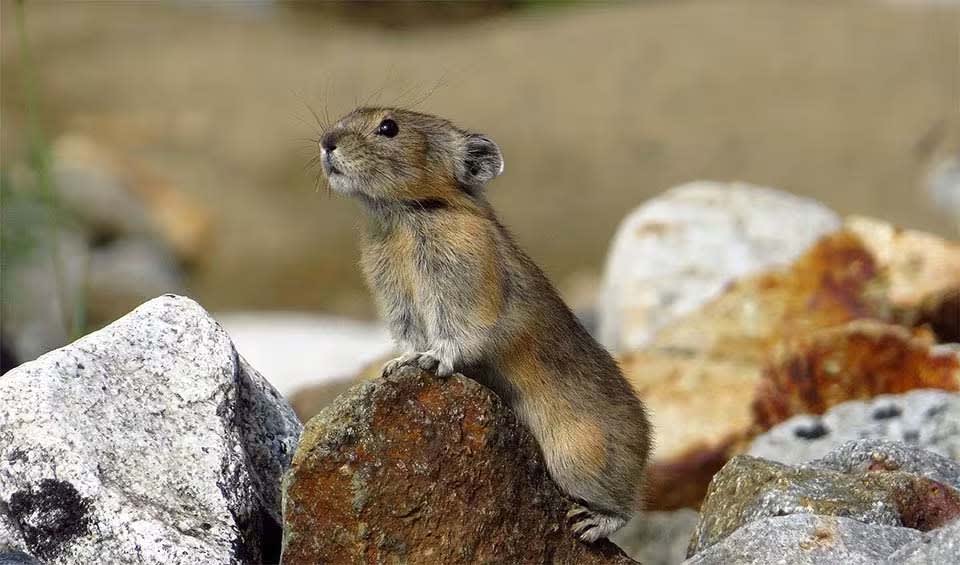During the summer months, the pika sports a reddish-brown hue, blending seamlessly with the landscape, while in the winter, its fur transitions to a more subdued greyish-brown tone to provide camouflage against the snowy terrain. Beneath its coat, the pika’s underside boasts a reddish-white coloration, adding to its aesthetic appeal.
Notably, the Northern pika undergoes molting twice a year, shedding its old coat to make way for the new, ensuring optimal insulation and protection against the elements. This process is vital for the pika’s survival in the harsh mountainous habitats it calls home.
Despite its small size, the Northern pika exhibits a resourceful foraging behavior, diligently gathering food to sustain itself throughout the year. Using its keen senses, the pika scours its surroundings for nutrient-rich vegetation, carefully selecting and harvesting plants to supplement its diet. Remarkably, the pika demonstrates cautious behavior while foraging, remaining vigilant for potential threats and retreating to the safety of its burrow at the slightest sign of danger.
The pika’s burrow serves as a central hub for its daily activities, providing shelter and security in the rugged terrain. Strategically located near feeding grounds, the burrow serves as a retreat where the pika can seek refuge from predators and adverse weather conditions. This behavior highlights the pika’s instinctual understanding of its environment and its ability to adapt to changing circumstances.
Distribution
 China
China Japan
Japan Mongolia
Mongolia Russia
RussiaAnything we've missed?
Help us improve this page by suggesting edits. Glory never dies!
Suggest an editGet to know me
Terrestrial / Aquatic
Altricial / Precocial
Polygamous / Monogamous
Dimorphic (size) / Monomorphic
Active: Diurnal / Nocturnal
Social behavior: Solitary / Pack / Herd / Group
Diet: Carnivore / Herbivore / Omnivore / Piscivorous / Insectivore
Migratory: Yes / No
Domesticated: Yes / No
Dangerous: Yes / No




